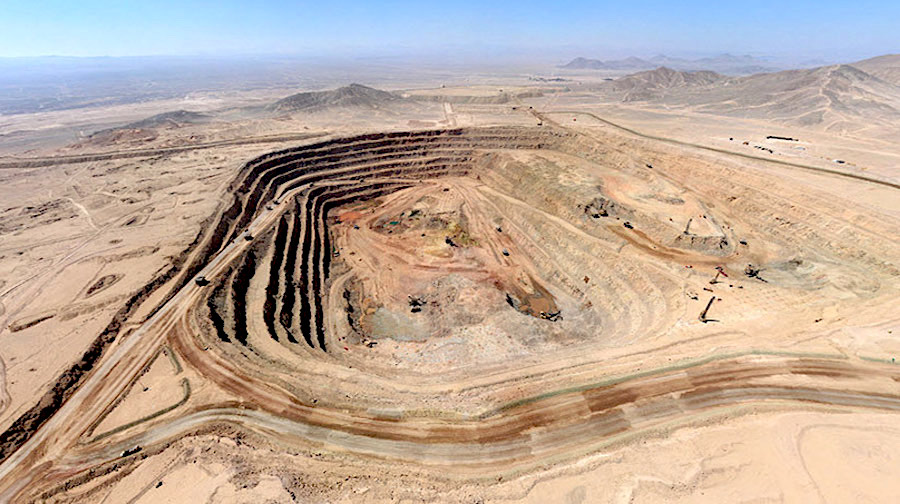
Polish miner KGHM (WSE:KGH), Europe’s second-largest copper producer, has decided to ditch a planned second phase of expansion of its Sierra Gorda mine in Chile on the back of high production costs an falling metal prices.
The state-controlled company grabbed the copper and molybdenum project in 2012, after buying Canadian rival Quadra FNX in what was the largest-ever foreign acquisition by a Polish company.
The Polish company, Europe’s second-largest copper producer, said that given current macro conditions, the plan “had lost sense.”
At the time of the deal, LME three-month copper prices were nearing $10,000 per tonne. Currently, LME copper is around $5,500 per tonne.
Announcing the decision, KGHM — which chose to delay the intended expansion last year — said that given current macro conditions, the plan “had lost sense,” Diario Financiero reports (in Spanish).
Chief executive Radoslaw Domagalski-Labedzki also noted that the company had no intentions of revisiting the idea in the future.
The news didn’t surprised investors, as asset impairment charges related to Sierra Gorda had already been hurting KGHM, pushing its financial results into the red in both 2015 and 2016.
Adding to KGHM’s troubles, the Polish government ordered early last year an audit into its foreign assets in direct reaction to the financial situation at the Chilean mine.
Sierra Gorda, a joint venture 55% owned by KGHM and 45% by Japan’s Sumitomo Metal Mining Co Ltd, began production in July 2014 with an expected output of 220,000 tonnes of copper a year once the now aborted expansion was completed.
Last year, it produced around 98,000 tonnes of copper, according to figures published by Chile’s government.
3 Comments
Pat Woods
Sierra Gorda economics were always predicated on robust moly output in early years.
KGHM did not optimize moly output (for a whole host to reasons) since starting their moly circuit in April 2015, and has largely squandered the best ore of the by-product metal that gave Sierra Gorda positive economics in the first place.
The good moly ore is fast depleting, and the dregs are what’s left. Beyond 2018, LOM grade of by-product moly ore is well less that .02%. Hence the reason to jettison thoughts of Phase 2 expansion.
Sumitomo got burned by the propaganda of KGHM, who were grotesque fools in and of themselves, evidenced by the Polish Gov’t canning the entire management team in early 2016.
50mm lbs. output in each of the first five years of operation, was always a ‘flying unicorn in the sky’ (fantasy), literally, and idiotic and constant KGHM trumpeting of such “planned” output only helped destroy the moly market pricing since 2014 even more so, in conjunction with a drop in oil prices (resulting in drop of demand for moly-bearing steel, used extensively in energy-related projects).
Sierra Gorda needed that 50mm lbs. in the first five years to financially make sense. Instead, they squandered away the good moly ore.
Junior JV partner Sumitomo should have spent their money on pachinko machines instead of a money-burning hole-in-the-ground down in Chile.
Goldfinger
I heard that they were will into construction then realised that they actually needed their Moly Circuit. Thats really basic stuff. I wonder what happened to the leaking tailings dam these guys put in ?? Maybe they didnt have enough budget for QA/QC consultants.
Minerals Analyst
This saga continues. KGHM is now wanting to exit this project and move to Asia.
As reported in the Polish media, the following are the main problems:
1. Loss making since initial investment
2. Inability to reach perfromance output (conc metal production volume and rate)
3. recovery is poor
4. environmental issues
5. social issues
General lack of strategy for processing this project.